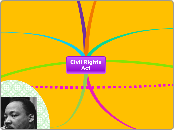THE PATH TO MODERN SPAIN
Topic principal
GENERATION OF 98
Group of writers who wrote about Spainś politics
CRISIS OF 98
The Catalan and Basque parties were left out f this system
The lost of the las territories created negative feelings
War with USA
CANOVAS DEL CASTILLO
It was a corrupt system
He created Turno Pacífico
ALFONSO XIII
He was king when he was born
He supported Primo de Rivera dictatorship
MARIA CRISTINA
She was the regent until her son was 16
ALFONSO XII
He ruled for 10 years and he died very young
MIGUEL PRIMO DE RIVERA
A military coup succeded
DEMOCRACY
In 2002 Spain entered the Eurozone
In 1986 Spain entered The European Union
In 1982 Spain joined NATO
On the 6 of December 1978 a nwe Constitution was voted
Peopleś rights, equality and freedom of expression
Constitutional Monarchy
In 1977 the first elections were held
Adolfo Suarez was appointed as Prime Minister by the king. He made some reforms
Released political prisoners
Open the door to free elections
He gave right to strike
He legalised political parties and unons
Juan Carlos I began the transition
Franco died in 1975
AFTER THE WAR
Franco abolished the constitution and established a dictatorship (1936- 1975)
The foreign tourism increased
Many people emigrated to other countries to look for work
Economy and quality of life started to improve
Life in Spain was difficult and the economy was failing
He enacted autarky
Less food
Economic crisis
He repressed opponents
Some people were imprisoned or killed
Gallician, basque and catalonian languages were prohibited
He limited the civil liberties of people
Political arties and unions were illega
Culture was censored
THE SPANISH CIVIL WAR(1936-1939)
The Nationalists occupied the food-producing areas of spain
Germany and Italy helped the Nationalist. The Soviet Union helped the Republicans
The Nationalist had more military power and they were more organised
The war ended when the Nationalist took control of Madrid and Barcelona
Nationalist supported Franco and Republicans supported the second Republic
The military uprising
The coup was not successful everywhere
A group of generals including Francisco Franco
Againts the Republic
On 17 and 18 of July 1936
The second Republic
THE CONSTITUTION OF 1931
Separated the Church from the government
Right to vote for women
Freedom of expression
It carried out
Labour Reforms
Lands Reforms
Education Reforms
on 14th April 1931 Spain became a republic again
People voted for a republic
AlfonsoXIII left Spain
Alfonso XIII called for elections but it was too late
Modernisation
Social classes
Working class
They formed Unions
They worked long hours for low wages
Factories workers in cities
Middle class
Lawyers,doctors and small business owners
Upper class
made up of nobles, factory owners and bankers.Bourgeoisie.
People start to work in factories
The population moves from rural to urban areas
Society is divided into capitalist classes









